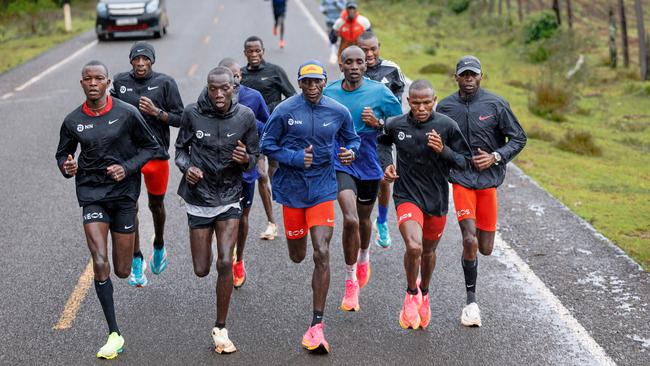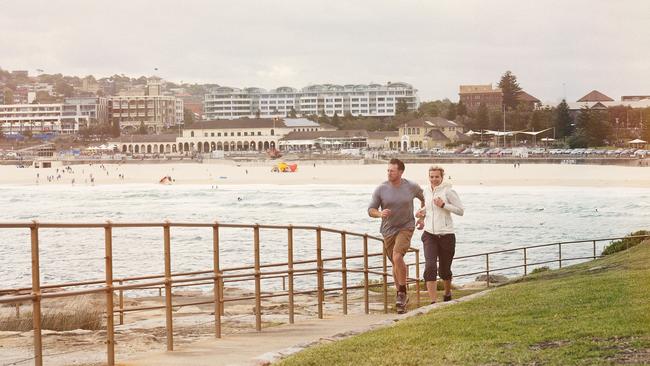Fartlek: The easy scientific trick that will improve your running
This simple interval training method can boost speed, endurance and health – and restore the fun – in your everyday runs.

If running in any form – whether it’s your first steps or attempting a marathon – is on your list of fitness goals this year, then here’s a tip you may find useful: leave your fancy fitness tracker or GPS watch at home sometimes.
Workout data is useful but can become overwhelming if every running stride is recorded and analysed for pace, cadence, effort and progress.
Sometimes simplicity brings the best results, which is why runners in the know are adding “fartlek” training to their routine.
A Swedish word meaning “speed play”, fartlek is an unstructured approach to interval training. It was the brainchild of the Swedish running coach Gosta Holmer who in the 1930s began asking his athletes to mix up the pace of a continuous run with fast, easy or moderate-paced efforts.
Today fartlek is used by elite athletes looking to improve speed and endurance without the constraints of electronic data – and it is rapidly being taken up by less elite runners.

Go with the flow
Tom Craggs, the national endurance manager for England Athletics and endurance coach at the University of Bath, says fartlek sessions are invaluable and one of the training methods he uses with faster and slower runners.
“The key principles of fartlek is that it is a continuous run at a ‘three out of 10’ effort pace interspersed with eight or more efforts at a ‘six to eight out of 10’ effort pace,” Craggs says. “It’s important not to go so hard on the short bursts that you are unable to return to an easy run pace afterwards, as stopping means it ceases to be fartlek.”
Physiologically, the gains from fartlek training are similar to those from timed – and much more prescriptive – interval training.
“Fartlek is a natural way to extend from just doing steady running to adding some quality and pace,” Craggs says. “And the outcome of varying intensity in this way is that you will get fitter over time.”
Proven results

Exercise scientists have repeatedly shown that fartlek running can help you to progress speedily towards your goals.
A 2020 study in the International Journal of Physiology, Nutrition and Physical Education reported that male students asked to do fartlek training three days a week for three months vastly improved cardiovascular fitness and speed endurance compared with a control group who continued with their own regular exercise routine.
Researchers from the College of Physiotherapy at Wanless Hospital in India also detailed the benefits of fartlek, including the fact that it can be done on any terrain – hilly, flat, grass or sand – and by everyone from beginners to elite runners.
The researchers stated that “the fluctuating and uninterrupted nature of [the] exercise puts stress on both aerobic and anaerobic energy systems”, leading to considerable gains in endurance and speed.
Mental benefits

But it is the mental benefits of fartlek that appeal to many runners who feel worn down by the likes, comments, kudos and feedback of electronically tracked routes.
I’ve been a runner for decades and a running coach (to athletes from beginner to international level), and I remain a firm fan of fartlek for all.
For me, the real beauty of it is that boundaries of time and distance are removed, allowing for a kind of spontaneity and unpredictability that you don’t get on the treadmill or athletics track. “Fartlek allows for much more sensitivity for how you are feeling on a given day,” Craggs says. “And without the pressure and expectation that comes with using GPS watches, you tend to move more freely in a way that helps your body to adapt better to the demands of the run.”
Perhaps its biggest appeal is that there are no strict rules – you need a plan of sorts, but can adapt it as you go along, varying the frequency and duration of efforts based on fitness levels and how you happen to be feeling that day.
“You just push yourself as hard as you want to push, which is quite different from being easy on yourself,” says Richard Askwith, the author of Running Free (Yellow Jersey Press). “Sometimes I’ll be feeling good and I’ll just sprint for the hell of it, and I’ll really relish the pain, but on other days, I’ll be lazier – and it’s probably because my body can feel an injury or an illness coming on.”
Pick your landmarks

Relying on nature and your surroundings – picking out a lamppost, tree or postbox as a marker to run towards – rather than a beeping watch for running cues, also replaces digital stress with a form of running release.
“To me it would be bonkers to say, ‘Right, I’m going to do sprints of exactly 100m and time them to the nearest 100th of a second,’” Askwith says.
“Why not just say, ‘Right I’m going to sprint from that tree to that fence post,’ because little details like fractions of a second simply don’t matter for the vast majority of runners.”
Craggs says that anyone who has been running for a while and can comfortably manage 20-30 minutes of continuous running should consider adding one to three fartlek sessions a week to their routine.
“Vary the terrain and the duration, mixing it up to keep things interesting,” he says.
One other thing it will do is prevent the “running rot” because you will never get bored.
“Fartlek is something that is fun, rather than a miserable chore,” Askwith says. “And that’s why I keep coming back to it, year after year after year.”

Here’s how to start fartlek running.
Have a rough plan before you set out
Although fartlek is hugely adaptable to your circumstances, you need to decide on some structure before you head out.
“Decide on the approximate duration of your run – 25, 30 or 40 minutes – and aim to do a 5-10 minute warm-up, then 8-15 bursts of effort, then a 5-minute easy pace run to cool down,” Craggs says. “Keep the efforts relatively short – 10, 20 or 30 seconds but no longer than 60 seconds – and make sure you jog in between those bursts.”
Running in town? Use traffic lights and lampposts as markers
Cities and towns are great places for fartlek running because there are so many marker options.
“You can run hard to a corner and jog to the next corner,” Craggs says.
“Or run hard and easy between alternate lampposts, fences or street crossings.”
Run hard up hills
Hills provide a form of resistance training because your body works against gravity to ascend them.
“Running hard up a hill is a great fartlek trick,” Craggs says.
“Try to run hard over the top of the hill and easy as you descend to build strength and endurance.”
Vary the surface as much as possible
Trees, gaps in hedgerows and farm gates are all good fartlek markers.
“Try to vary the surface and terrain you run on as much as possible,” Craggs says.
“Include some sharp inclines, longer drags, soft and hard ground as well as some downhill running, which taxes the quadriceps at the front of the thigh.”
The Times






To join the conversation, please log in. Don't have an account? Register
Join the conversation, you are commenting as Logout